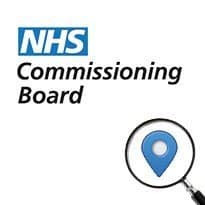NHS CB tries to spot further Mid Staffs’
- 7 February 2013

The NHS Commissioning Board has ordered an immediate inquiry into the five hospitals that show up as outliers on the NHS’ current mortality indicator.
The move is part of its response to the final report of the public inquiry into the scandal into Mid Staffordshire NHS Foundation Trust, which was unveiled by its chair, Robert Francis QC, yesterday.
NHS CB medical director, Sir Bruce Keogh, will conduct the investigation into the five hospitals that have been outliers on the Summary Hospital-Level Mortality Indicator for two years.
The SHMI was devised in response to the first of Francis’ investigations into Mid Staffordshire, which had high death rates and very poor care in A&E and some wards.
It examined why early attempts to uncover the scandal had become bogged down in disputes about whether the trust’s poor performance against an earlier indicator, the Hospital Standardised Mortality Ratio, were the result of statistical or real problems.
Francis hoped that it would be possible to secure support for a new indicator, and end disputes between different bodies over what it was telling managers and regulators.
However, there are still concerns about the way the indicator is constructed. And a paper just published on BMJ Open has cast doubt on whether mortality indicators can do the “early warning” job that Francis and policy makers hope.
The paper, by Daniel Ray and Domenico Pagano, direct of informatics at Birmingham University Hospitals NHS Foundation Trust, and director of its Quality and Outcomes Research Unit, describes an attempt to construct another indicator to address some of the criticisms levelled at the SHMI.
They argue that the Quality and Outcomes Research Unit Measure, or QUORUM, is a better measure than the SHMI, because it takes account of more factors that are outside a hospital’s control.
However, they also find that QUORUM, like the SHMI, fails to find much variability between trusts.
The authors conclude that no English trusts would be identified as outliers in the normal sense of the word on either the SHMI or the QUORUM. They argue that a wider range of indicators, focusing on the quality of treatment delivered to patients who leave hospital alive, should be developed.
The NHS CB has said that Sir Bruce will investigate: Colchester Hospital University NHS Foundation Trust; Tameside Hospital NHS Foundation Trust; Blackpool Teaching Hospitals NHS Foundation Trust; Basildon and Thurrock University Hospitals NHS Foundation Trust; and East Lancashire NHS Foundation Trust.
All of these have shown up as poor performers on the SHMI for two successive years. The details of the investigation have yet to be announced.
The NHS CB said the move was just the first step in a package of work to “repair the damage to public confidence” caused by the Mid Staffs scandal.
It also said that as an organisation it would “reflect fully on the harrowing experiences of those personally affected by the failures at the trust” and that it was already undertaking work in a number of areas identified by Francis as being essential to preventing similar scandals in the future.
Francis called for better standards and ways of measuring compliance, and the NHS CB said it had already asked healthcare expert Don Berwick to develop a “national quality dashboard” to “identify safety failures in providers.”
Francis also called for new duties of transparency and candour in the NHS, and the NHS CB said it had implemented a duty of candour in the NHS contract.
Finally, the report called for more accurate and useful information to be published for patients and the public, and the NHS CB said it had made a start with the ‘family and friends’ test and plans to publish surgical outcomes to consultant level in ten specialties.




